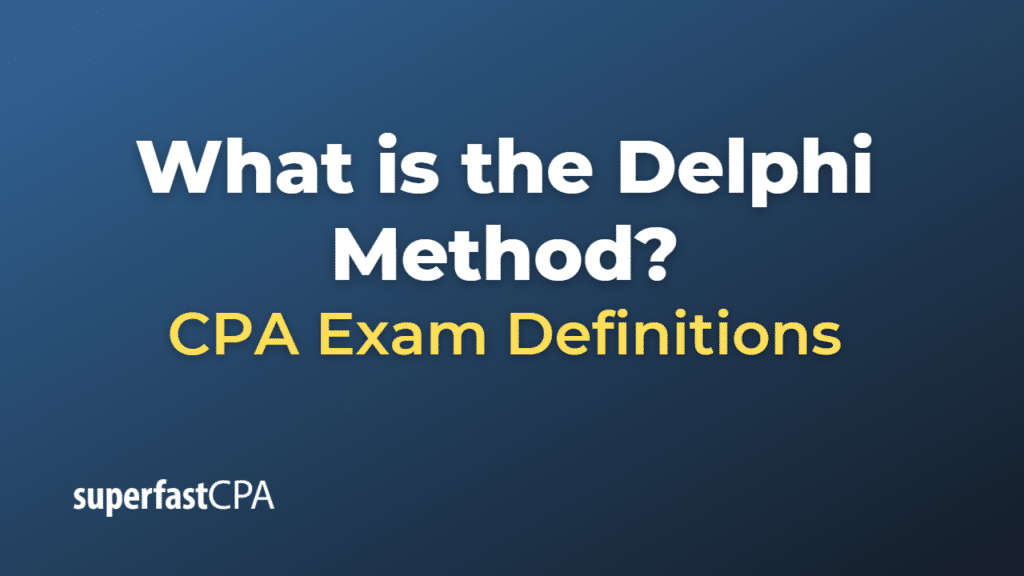Delphi Method
The Delphi Method is a forecasting process framework that is based on the results of several rounds of questionnaires sent to a panel of experts. The responses are aggregated and shared with the group after each round. The experts are then encouraged to revise their earlier answers in light of the replies of other members of the panel. It is believed that during this process the range of the answers will decrease and the group will converge towards the “correct” answer.
The Delphi method has four key characteristics:
- Anonymity: The identities of the experts in the panel are kept anonymous. This allows the experts to express their opinions freely, encourages openness and avoids any dominant individual influencing the group.
- Iteration: The Delphi method is carried out in multiple rounds, allowing the experts to refine their views in light of the progress of the group’s work.
- Controlled Feedback: After each round, a facilitator provides a summary of the experts’ forecasts from the previous round, as well as the reasons they provided for their judgments. This allows experts to see how other members of the panel responded and gives them the opportunity to revise their views.
- Statistical Aggregation of Group Response: The final judgments are statistically aggregated. This is usually done using median scores.
The Delphi method is used in various fields such as technology forecasting, business forecasting, and decision making in public policy and other areas. It is especially useful for long-term forecasting where precise numerical methods might not be available or practical.
Example of the Delphi Method
Let’s consider an example of how the Delphi method might be used for technology forecasting in the field of renewable energy.
A panel of experts is assembled, including scientists, engineers, economists, and policymakers, each with a background in renewable energy.
- First Round: Each expert is asked to answer a series of questions individually and anonymously. The questions might be about the potential impact of various technologies, the timeline for their development, and the obstacles that might be encountered. For instance, one question might be: “By what year do you believe solar power will become the most dominant source of energy worldwide?”
- Controlled Feedback: After the first round, a facilitator compiles the responses, anonymizes them, and shares them with the group. The experts can see the range of responses and the reasons given.
- Second Round: The experts are then asked to reconsider their original answers in light of the feedback from the group. They might be asked to provide new estimates or to rank a series of outcomes based on probability.
- Further Rounds and Conclusion: This process is repeated for several rounds until the responses begin to converge and a consensus or near-consensus is reached. The final result might be a forecast that solar power is likely to become the most dominant source of energy by 2040, for example, along with a discussion of the key factors that could influence this outcome.
This example illustrates how the Delphi method allows a diverse group of experts to work together in a structured way to forecast complex and uncertain future outcomes.













